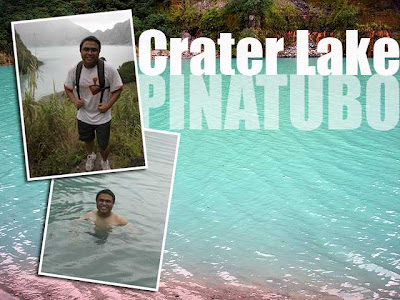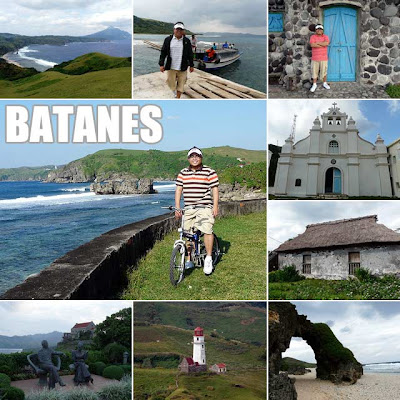 There are more churches to visit in Leyte and Southern Leyte. But given my limited time, I had to select the best-preserved ones. Since I had to be back in Bato by 10 a.m., I had to start the day early to visit Malitbog, also in Southern Leyte, which is a little over an hour from Maasin by public transport.
There are more churches to visit in Leyte and Southern Leyte. But given my limited time, I had to select the best-preserved ones. Since I had to be back in Bato by 10 a.m., I had to start the day early to visit Malitbog, also in Southern Leyte, which is a little over an hour from Maasin by public transport.The first bus passed by shortly after 4:30 a.m. and I was there a few minutes before 6 a.m. just in time to hear the church bells calling people to church for Sunday Mass. The church is one of the best-preserved churches in Leyte Island since even the main retablo and side altars are intact. Centuries-old acacia trees lined the street leading to the church.
 The town has several ancestral homes still standing and a watch tower that had been converted into the municipal police station and jail. Now that’s adaptive reuse! But I think the exterior should be improved since the old stone was painted over to sport that standard white and blue PNP look which looks bad on heritage structures.
The town has several ancestral homes still standing and a watch tower that had been converted into the municipal police station and jail. Now that’s adaptive reuse! But I think the exterior should be improved since the old stone was painted over to sport that standard white and blue PNP look which looks bad on heritage structures. Since I was running after time, I took the first jeep going back to Maasin. Along the way is the town of Padre Burgos. I noticed a lot of dive resorts which is also frequented by foreigners. There are ruins of the old church in the town center but there is nothing much left so I didn’t stop over anymore.
Since I was running after time, I took the first jeep going back to Maasin. Along the way is the town of Padre Burgos. I noticed a lot of dive resorts which is also frequented by foreigners. There are ruins of the old church in the town center but there is nothing much left so I didn’t stop over anymore.Back in Maasin, since the sun was out (it was drizzling yesterday), I decided to walk around and check out the old houses. I was depressed to see one of the better looking old houses giving way to another ugly nondescript building. We really should protect these architectural gems since they add character to our otherwise boring cities.
 I stopped by the Cathedral again before proceeding to the transport terminal to get a van back to Bato. They really stuff those vans like crazy! Each row had four people in it! I think the appropriate government agency should regulate these vans for overloading.
I stopped by the Cathedral again before proceeding to the transport terminal to get a van back to Bato. They really stuff those vans like crazy! Each row had four people in it! I think the appropriate government agency should regulate these vans for overloading.Vans are much faster since the drivers like crazy as well (and not much stopping). So I was in Bato in a little over 30 minutes. I arrived at the port in time to find out that trips all over Leyte were canceled due to the typhoon. Although it was sunny in Leyte, PAGASA had declared signal number 1 all over the region. And with the new rule grounding all shipping services when there is a storm signal, despite it being a sunny day, all ferry services to Cebu from Maasin to Ormoc were not allowed to leave. So I was stranded! That story deserves another post.
 Anyway, I thus got to visit Baybay City which also has a well-preserved church (again with a modernized altar) a classic Gabaldon school and several ancestral homes. In fact, I reached Ormoc City trying to look for a ride back to Cebu and got to explore a good part of the city center.
Anyway, I thus got to visit Baybay City which also has a well-preserved church (again with a modernized altar) a classic Gabaldon school and several ancestral homes. In fact, I reached Ormoc City trying to look for a ride back to Cebu and got to explore a good part of the city center. Nothing much is left of the Ormoc Church except for a remnant of a bastion that was part of the church fortifications. Behind the City Hall is an old Spanish-colonial bridge which I was happy to see was preserved for all to see. I went back to Bato, an hour and thirty minutes by van from Ormoc, where I decided to stay for the night.
Nothing much is left of the Ormoc Church except for a remnant of a bastion that was part of the church fortifications. Behind the City Hall is an old Spanish-colonial bridge which I was happy to see was preserved for all to see. I went back to Bato, an hour and thirty minutes by van from Ormoc, where I decided to stay for the night.Part 1: Visita iglesia in Leyte and Southern Leyte


















